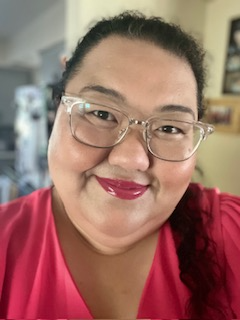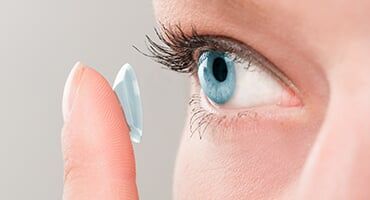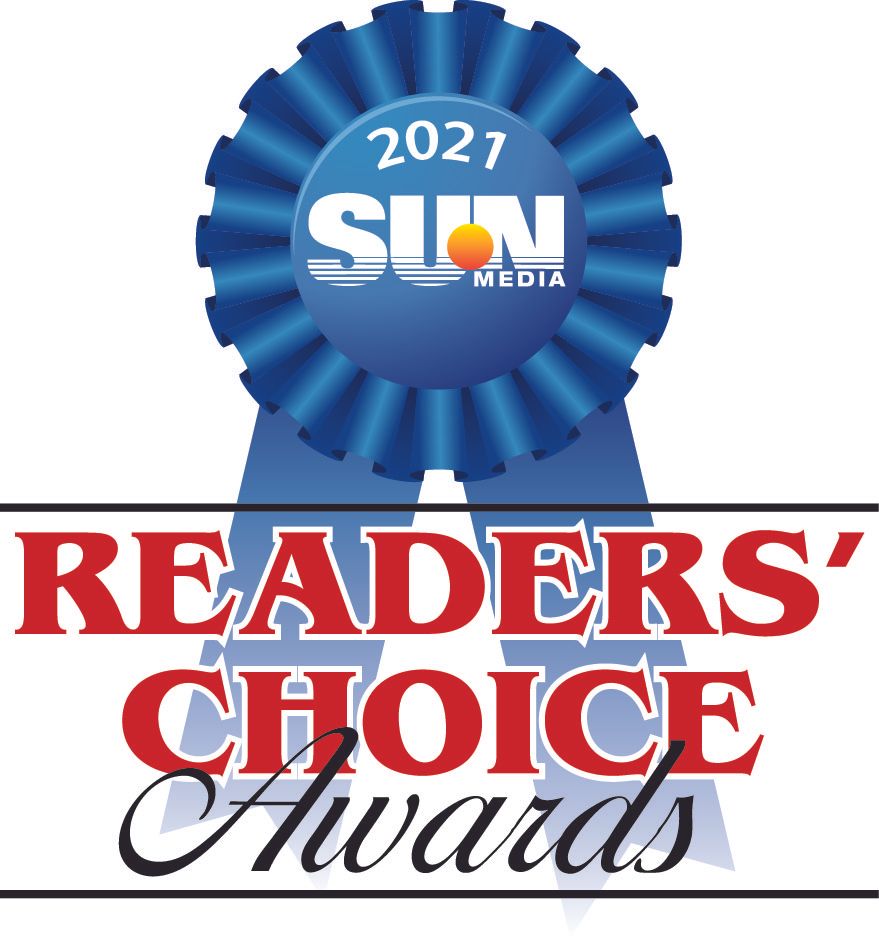
Cheryl has been a Certified Contact Lens Technician with over 25 years of experience fitting all types of soft, rigid, bifocal and keratoconus lenses. She is a former board member and Fellow of the Contact Lens Society of America, and past President and Board Member of the Minnesota Contact Lens Society. Cheryl enjoys building relationships and giving personalized service to all of her patients.

Technician
Christina Lewis, NCLE-AC, ABOC
Christina is an Advanced Certified Contact Lens Technician with over 20 years of eyecare experience. She has experience fitting all types of soft, rigid (RGP), multifocal and scleral contact lenses. She is a former Director for the Minnesota Contact Lens Society and an NCLE and ABO approved speaker. Christina enjoys problem solving along with her patients and is eager to uncover and identify solutions to meet their visual needs. She keeps up to date with new and innovative lens technologies in order to provide the best comfort and vision for all of her patients. She has a passion for patient care and education.

Technician
Ka Yang, NCLE, ABO, COA
Ka is a Certified Contact Lens Technician with more than 20 years of experience in the eyecare field. She is passionate about helping patients find the contact lenses that best fit their lifestyle, visual needs, and daily routines. Ka believes that exceptional patient care begins with truly understanding each individual’s background, concerns, and goals.
With extensive experience fitting a wide range of contact lenses, Ka stays current with the latest lens technologies and innovations to ensure her patients receive the highest standard of care. She is known for her compassion, integrity, and commitment to creating a comfortable, supportive experience for every patient she serves.
Outside of work, Ka enjoys spending time with her family and is an active member of her church community.
FITTINGS AND EVALUATIONS
GENERAL INFORMATION
Contact lenses are foreign bodies placed directly on the eye. This changes the ocular environment and requires regular monitoring to assure long term ocular health. The early stages of some forms of ocular pathology do not produce obvious symptoms. When these changes are detected early, remedial action can be taken to prevent the development of more serious complications. If changes in existing contact lens parameters are indicated a re-fitting is required to determine new lens specifications and the fitting protocol will be followed. An annual evaluation is strongly recommended for all contact lens wearers. An evaluation will determine the condition of your present contact lenses, your eyes tolerance for them, and any changes in lens parameters that are needed.
A healthy corneal surface is smooth and regular in shape. Occasionally, due to poorly tolerated contacts or ocular pathology, the corneal surface can become irregular in shape and cause blurred vision. When this condition is suspect a special diagnostic test, corneal topography, is indicated. Corneal topography is a detailed sophisticated measurement of thousands of points on the corneal surface. This information is then used to produce a topographical map of the corneal surface which will clearly show surface irregularities. This information can be highly valuable in determining the proper course of action for your future contact lens wear.

A CONTACT LENS PRESCRIPTION
The end result of a successfully completed contact lens fitting. It details the exact contact lens specifications that have been found to be appropriate for your eyes during the fitting process. A current prescription is required by law to purchase contact lenses. Your contact lens prescription can be used to purchase your lenses here or elsewhere.
A CONTACT LENS FITTING
A process wherein specific lenses are selected for you that should be safe, comfortable, and provide good acceptable vision. Measurements of the eyes are taken, an initial pair of lenses is selected, care and handling instructions are provided, and then the contacts are dispensed to you to be worn for a one to two week trial period. After the trial period you will return to the clinic for a follow-up visit to evaluate the eyes tolerance for the contacts, to recheck the visual acuity and accuracy of the lens correction, and to address any problems that you may have had. Follow-up visits are an essential and necessary part of the fitting process.
It is important to keep your scheduled follow-up visits during the fitting process. Most manufacturers offer a warranty period of 60 to 90 days and, during this period, lens parameter changes can be made without incurring additional charges. Once the warranty period has expired no further changes can be made without additional charges. Your warranty information will be provided to you at the time of your fitting.
FEES FOR PROFESSIONAL SERVICE
Professional fees for service are separate from material or contact lens costs. Payment for evaluations, re-evaluations, and office visits is due when the service is provided. Insurance does not cover a standard contact evaluation, or re-evaluation. Please contact our office for specific pricing information. Payment for a contact lens fitting or re-fitting is due when the service is requested and initiated. Payment for contact lenses is due when the lenses are ordered. Special orders may include additional charges.
Refunds for contact lenses vary according to lens type and the manufacturers' policy and will incur a restocking fee. Refund information for your lens type will be provided at the time of your fitting. There are no refunds for service fees.
Jump to Top
CONTACT LENS FAQ
CAN I SLEEP IN MY CONTACTS?
Studies have shown that there is increased risk of complications when contact lenses are slept in. One of the worst of these is a bacterial corneal ulcer. These can leave corneal scars and significantly compromised vision. We do not recommend sleeping in your contact lenses.
ARE THERE BIFOCAL CONTACT LENSES?
There are many options available today for the presbyope, or the person who needs “readers” or “bifocals”. There are bifocal, multifocal, and mono vision contact lens options. Which option is best for an individual depends on their specific needs. This is carefully evaluated during the fitting process.
SHOULD I WEAR HARD OR SOFT CONTACT LENSES?
Most individuals could wear either, but will find that their specific ocular conditions and needs will be served best by one or the other. This is determined during the fitting process.
CAN I GET A COPY OF MY CONTACT LENS RX?
Yes, please see details under Contact Lens Prescriptions.
AM I TOO OLD TO WEAR CONTACT LENSES?
There is no upper age limit for wearing contact lenses. The determining factors are ocular health, motivation, and dexterity.
I HAVE ALLERGIES, CAN I STILL WEAR CONTACTS?
Allergies are not necessarily a contraindication for wearing contact lenses. However the type, severity, and treatment of allergies will influence wearing schedules, lens types, and solution use.
HOW OLD DOES MY CHILD NEED TO BE BEFORE HE/SHE CAN WEAR CONTACTS?
Children need to be responsible enough, on their own, to attend to the details involved in wearing and caring for contact lenses safely.
CAN I WEAR CONTACTS AFTER REFRACTIVE SURGERY IF NECESSARY?
It is possible to wear contacts after lasik surgery. However, it will probably require a specialty lens designed for the post lasik cornea.
WHAT CONTACTS WORK BEST FOR PATIENTS WITH KERATOCONUS?
Keratoconus is a corneal condition which causes the cornea to become misshapen resulting in progressive thinning of the apex of the cornea. Specially designed hard contact lenses are the traditional contact lens of choice, however new soft lenses for keratoconus are also an option.
IF I WEAR CONTACT LENSES, HOW OFTEN SHOULD I HAVE MY EYES CHECKED?
It is prudent and highly recommended that contact lens wearers have an annual check up. Contacts are foreign bodies and the eyes tolerance for them should be checked annually. This is not a full eye exam with you Ophthalmologist.
WHAT IS NEW WITH COLORED CONTACTS?
Colored contacts fall basically into two categories; enhancers and opaques. Enhancers work best for light colored eyes, whereas opaques work best for dark hazel or brown eyes. What's new is that the color options in both categories–especially opaques–have increased significantly.
WHICH SOFT CONTACT LENS REPLACEMENT OPTION IS BEST?
The replacement option that is best for an individual is the one that is the healthiest. That option depends on a variety of factors that are evaluated during the fitting process.
ARE THERE LENSES FOR ASTIGMATISM?
Today virtually any amount of astigmatism can be corrected with either soft or rigid contact lenses.
Jump to Top
CARE FOR SOFT LENSES
- WASHING: Wash your hands before handling your lenses, rinse well, and dry with a lint free towel. Fingernails should be short and smooth to avoid damaging the lenses or scratching your eye. Ivory or Neutrogena bar soap are recommended.
- RINSE OFF: Remove lens from case and rinse well with contact lens solution. To avoid possible mix-ups, take the right lens first each time.
- INSPECTION: Place the lens on your forefinger to inspect it for cleanliness and determine if it is right side out.
- INVERTED LENS: If the lens is in the correct position, the edges will appear almost straight up. When inverted, the lens edges will flare out slightly. This is often difficult to determine until you have had a little practice.
- INSERTION: Hold the upper lashes (not the lid) to prevent blinking. Pull the bottom eyelid down. Focus on a steady point with the eye you are putting the lens on. Place the lens on the central cornea, not to the side. Do not blink until the lens is in place.
- EYE DROPS: One or two drops of lens lubricant are recommended if your lenses feel dry or if blurry vision occurs while wearing. Eye drops may also be helpful prior to removal if your lenses feel dry or sticky.
- REMOVAL: Wash hands before removal. Slide the edge of your lens down onto the white part of your eye (sclera). Then gently squeeze the lens between your thumb and forefinger to remove.
- CLEANING: Ignore the “No Rub” message on multipurpose solutions. Rub your lenses daily, after removal, with proper cleaning solution. Your contacts must be cleaned after wearing. Place the lens in your palm, put a drop or two of cleaning solution on it and rub in a straight back and forth motion. Rinse the lens with saline solution or multipurpose solution and place lens in storage case.
- CLEAN CASE DAILY: In the morning, after inserting your lenses, rinse the case and lids with solution and leave it open to air dry. This will reduce the growth of bacteria in your case. Replace the case every month or two.
CARE FOR RGP LENSES
- WASHING: Wash your hands before handling your lenses, rinse well with solution, and dry with a lint free towel. Fingernails should be short and smooth to avoid damaging the lenses or scratching your eye. Ivory or Neutrogena bar soap are recommended.
- INSPECTION: Remove lens from the case and inspect it for cleanliness.
- APPLY WETTING SOLUTION: Wetting solutions are used to make the contact lens surface more compatible with your tears. They also increase wearing comfort.
- INSERTION: Hold the upper lashes (not the lid) to prevent blinking. Pull the bottom eyelid down. Focus on a steady point with the eye you are putting the lens on. Place the lens on the central cornea, not to the side. Do not blink until the lens is in place.
- EYE DROPS: One or two drops of lens lubricant are recommended if your lenses feel dry or irritated.
- REMOVAL: Wash hands before removal. Place your index finger at the outer corner of the eyelids. Looking straight ahead, pull the lids out and up, then blink. This usually requires practice to master.
- CLEANING: Your contacts must be cleaned after wearing. Place the lens in your palm, put a drop or two of cleaning solution on it and rub in a straight back and forth motion.
- CLEAN CASE DAILY: In the morning, after inserting your lenses, rinse the case and lids with solution and leave it open to air dry. This will reduce the growth of bacteria in your case. Replace the case every month or two.
PROBLEMS
IN THE BEGINNING IT IS NORMAL IF:
- Your eyes itch or feel funny
- One lens is more noticeable than the other
- Your vision seems fuzzier than with glasses
- One eye sees better than the other
- You have trouble handling your lenses
REMOVE YOUR LENSES IMMEDIATELY AND CALL THE OFFICE IF:
- You develop unusual pain or redness
- You develop unusually foggy or cloudy vision
- You experience a decrease in vision that does not clear up
- You suspect something is wrong
MAKEUP TIPS
Contact lens wear can be hindered by many factors, including one that is often overlooked – eye makeup. Here are a few tips that can lead to more successful contact lens wear.
- Put your contact lenses in before applying cosmetics to avoid picking up makeup residue
- Always remember to close the tops of cosmetics to help prevent bacterial contamination
- Avoid hair sprays and spray deodorant as the spray may go into your eyes.
- Use only water-based mascara and eye makeup remover labeled hypoallergenic or for sensitive eyes. Avoid waterproof mascara as it contains mineral spirits and petroleum distillates, which are irritating. NEVER USE VASOLINE OR BABY OIL.
- The safest eye shadow is a cream product, since creams do not create particle fallout like powdered shadows. If powdered eyeshadows are used, a base should be used on the lids prior to application. This will keep the shadow on the lids.
- Eyeliner must not be applied to the inner eyelid margins as it can cause pore blockage. Soft crayon-type pencil liners are less apt to cause flaking than liquids.
- Moisturizers should not be put inside the bony orbital area of the eye.
 3939 W 50th Street, Suite 200, Edina, MN 55424
3939 W 50th Street, Suite 200, Edina, MN 55424











